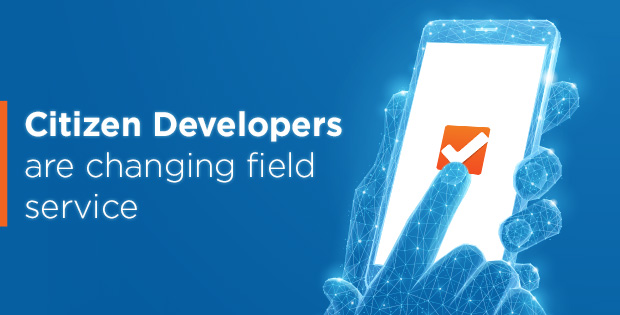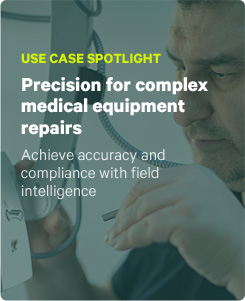
How much do you know about the coding that goes into your laptop, mobile phone, or social networking platforms? If you’re not an IT person, chances are not very much.
In work environments it’s the IT specialists — the technical engineers and programmers — who troubleshoot, innovate, and build department and enterprise-wide IT solutions. But citizen developer tools are beginning to join the ranks. And those changes are happening fast.
What is a citizen developer?
Citizen developers, Forbes magazine explains, are individuals within a company who have access to a visual integrated development environment. Within this environment, the citizen developer is able to use low-code application components and connect them together to generate custom mobile applications. Common features include reusable templates, drag-and-drop tools, and process modeling. Individuals or small teams can design, experiment, prototype, and deliver powerful apps in just days or weeks. IT supports business users by managing the technical infrastructure.
Low-code application platforms are enabling this shift. They cultivate a democratic sensibility by allowing IT to transfer application development into the hands of those who know their processes.
Further, Forbes points out, while low-code platforms may require a certain degree of technical knowledge, the more cutting-edge low-code platforms require little to zero technical background.
Computing skill shortages are reaching a critical point
Conventional development methods require a special set of skills that are in short supply. In general, there is a zero-unemployment environment in field service. According to Service Council, 57% of field service leaders were focused on the workforce and talent shortages in 2019.
This is felt acutely in IT where there is not only a talent shortage but also a developer shortage. Gartner reported in 2019 in their Low-Code Development Technologies Evaluation Guide that the widening gap between availability and demand for IT develop skills is reaching critical mass. Today the tech talent gap is larger than ever, and it carries serious business implications.
Consider this scenario:
You’re a line of business leader and need to improve your processes fast. It takes far too long to process customer requests, find customer info, dispatch service, collect, compile, and share completed work order details with billing, purchasing, sales, and other internal touchpoints. Your team is doing the best it can but is demoralized by poor customer satisfaction scores and frustrated by inefficient workflows. You ask IT for help to build a workflow app but learn your request is the latest and last in a 12-month backlog.
With an LCAP, this line of business leader can use an IT-approved platform to build custom apps that improve their processes. This is quickly becoming the solution for many organizations. In fact, Gartner goes on to further claim that “By 2024, low-code application development will be responsible for more than 65% of application development activity.”
Steve Jobs never wrote computer code for Apple
Nowadays people with a deep understanding of field service complexities, processes, and challenges can follow in Job’s footsteps, to envision, create and manage powerful applications for their business –without needing coding or programming experience and without using shadow IT tools that are un-approved by IT and don’t meet stringent security standards.
Joel Fear, Product Marketing Manager at ProntoForms elaborates, “Consider the main parts of a field service workflow: job dispatch (getting the work sent out), execution of the job itself, and then submission back to the office of the work that’s been done. These are all important parts of overall business processes, and combined, model the most complex and difficult operational aspects of field service. To make citizen developed field service software highly usable it’s critical to actually model the real-world concepts following the interactions you have in your business. Those who understand the series of necessary tasks best, most often people with no IT or coding experience, whatsoever, can automate their own processes.”
Empowering staff through field service citizen development low-code tools:
- Eases the pressure IT teams face, being tasked to do more and expected to produce outcomes faster with limited resources and people
- Delivers substantial savings by shifting the need for more software developers to build solutions to the line-of-business people already in place who can fill the operations/automation gap drawing from their personal expertise
- Frees up and massively broadens the value of developers by focusing their knowledge and expertise on tasks beyond rote coding
- Promotes more collaboration between lines of business and IT so applications correspond precisely with specific [i.e. field service] requisites
- Dramatically expands the number of people who can contribute to digital transformation
- Ramps up agility and speed; in fact, Forrester Research claims that citizen developers have the potential to build software applications as much as 10-times faster than conventional development methods
Conclusion
In 2019, eighteen vendors (out of 200 evaluated) were included in the Gartner Magic Quadrant for Low-Code Application Platforms. ProntoForms was the only field-focused citizen development solution. For more information about a proven, stable supplier with a long-term strategy that aligns with yours, sign up for a trial.



